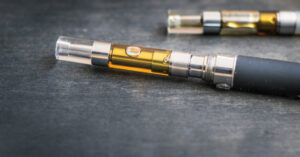
Microdosing involves taking small, sub-therapeutic doses of a substance to achieve desired effects while minimizing any potential side effects. In the case of THC gummies, microdose thc gummy allow users to experience the therapeutic benefits of cannabis without feeling overly intoxicated.
THC Absorption
THC absorption occurs primarily in the gastrointestinal tract, where the compound is absorbed into the bloodstream and distributed throughout the body and brain. However, the rate at which microdose thc gummy is absorbed can vary depending on several factors.
Factors Affecting Absorption Rate
Metabolism: Individual differences in metabolism can influence how quickly THC is processed and absorbed.
Body Composition: Body fat percentage and overall body mass can affect how THC is distributed and metabolized.
Food Intake: Consuming THC gummies on an empty stomach may lead to faster absorption compared to taking them with food.
THC Concentration: The potency of the THC gummies can also impact absorption rates.
The Time Frame for THC Gummies to Take Effect
When it comes to microdosing THC gummies, the onset of effects can vary from person to person. However, there are general timelines to consider.
Initial Effects
After consuming THC gummies, users may start to feel initial effects within 30 minutes to 2 hours. These effects typically include a sense of relaxation, euphoria, and heightened sensory perception.
Peak Effects
The peak effects of THC gummies usually occur around 2 to 3 hours after consumption. During this time, users may experience the full intensity of the “high” sensation, depending on the dosage and individual tolerance levels.
How to Microdose THC Gummies Safely
To microdose THC gummies safely, it’s essential to start with a low dose and gradually increase as needed. This allows users to find their optimal dosage without experiencing overwhelming effects.
Managing Expectations
Users need to understand that the effects of THC gummies can vary depending on several factors, including dosage, tolerance, and individual physiology. Managing expectations and starting with a conservative approach can help prevent adverse reactions.






